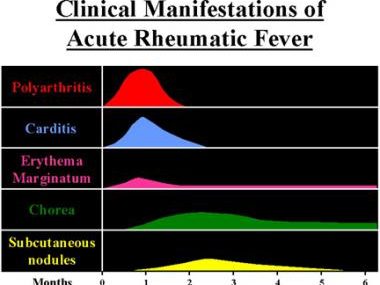Chronic Carditis
Chronic carditis, Rheumatic fever History and Treatment
[pro_ad_display_adzone id=”17752″]
Rheumatic fever (ARF) and rheumatic heart disease (RHD) continue to be major causes of illness and fatality in the majority of developing nations, affecting mainly the young population.[1][2]
Focal breakouts associated with Chronic carditis has been well documented since the mid 1980s in many developing western nations, while in other less fortunate parts of the world (third world countries) we can notice that this particular disease has nearly vanished.[3]
Introduction of penicillin in mid 1940s changed the organic prognosis of rheumatic fever, which is the major cause of chronic carditis. Reading the disease historical journal may look like a great big joke, with countries of heavy industrial powers railing under the might of temperature whereas homelessness people seem to fight well this condition. Even though the outbreaks of rheumatic fever declined in most countries due to better living conditions on earth since the 20th century.
Treatment
Treatment of rheumatic fever primarily involves utilization of antibiotics (penicillin) to eliminate streptococci, as well as anti-inflammatory drugs like salicylates or adrenal corticosteroid drugs.[6]
Patients with chronic carditis, congestive heart failure and pericarditis are best handled with adrenal corticosteroid drugs (cortisone, prednisone,.) as these medications are considered high class anti-inflammatory agents compared to salicylates (aspirin).[5]
Salicylates are widely used for the treatment of mild carditis.[4]
The treatment must be continued for at least 12 weeks after confirming the diagnosis. Several patients had developed conditions that shown valvular regurgitation, and not myocarditis, which is the most common cause of congestive heart failure in active rheumatic carditis. consequently surgery with mitral valve replacement or repair is indicated in cases with intractable hemodynamics due to mitral regurgitation.[1][7][8]
Development of disease associated with chronic valvular prolapse after an episode associated with rheumatic fever is dependent upon the existence or absence of chronic carditis in the last episode and the level of adherence and compliance with secondary prophylaxis (secondary prevention medications).[9]
Recurrences because of inadequate penicillin prophylaxis have a significant persistent impact on hemodynamically valvular lesions requiring surgical treatment.
References
Verified by: Dr.Diab (November 30, 2017)
Citation: Dr.Diab. (November 30, 2017). Chronic Carditis Rheumatic Fever History and Treatment. Medcoi Journal of Medicine, 11(2). urn:medcoi:article1520.














There are no comments yet
Or use one of these social networks